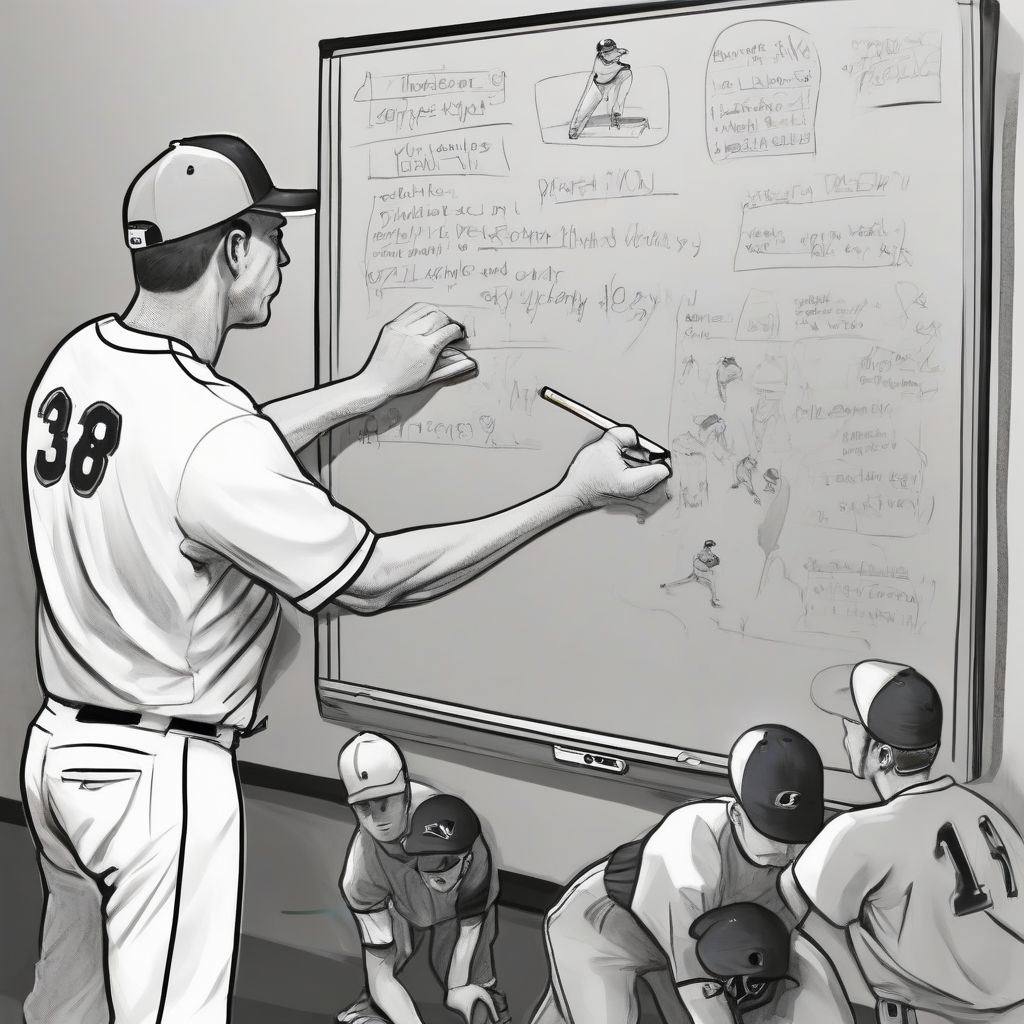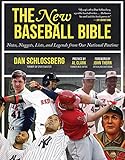“It’s not whether you win or lose, it’s how you play the game” – this old adage might ring true for casual games, but in the high-stakes world of baseball, winning is definitely the goal. And winning, as any seasoned fan will tell you, takes more than just raw talent. It demands strategic depth, tactical flexibility, and a deep understanding of the game within the game.
This article delves into the fascinating world of baseball team strategies and tactics, exploring the key elements that contribute to success on the diamond. From pre-game planning to in-game adjustments, we’ll uncover the secrets behind effective pitching and hitting, defensive alignments, and baserunning prowess. Whether you’re a seasoned coach looking for fresh perspectives or a dedicated fan eager to deepen your understanding of the game, this comprehensive guide has something for you.
Laying the Groundwork: Pre-Game Strategies
Before a single pitch is thrown, the battle for victory begins with meticulous pre-game planning. Coaches invest hours studying their opponents, analyzing their strengths and weaknesses, and devising a game plan tailored for success.
1. Opponent Scouting Reports: Decoding the Enemy
In the age of advanced statistics and data analytics, knowledge is power. Teams rely heavily on detailed scouting reports that dissect every aspect of their opponent’s play. These reports provide a comprehensive overview of a batter’s tendencies against different pitches, a pitcher’s repertoire and release points, and the defensive tendencies of each player.
 Baseball Scouting Report
Baseball Scouting Report
Coaches use this data to devise a game plan, exploiting opponent weaknesses while minimizing their strengths. For instance, if a batter consistently struggles against fastballs inside, the opposing pitcher might exploit this weakness by focusing on that area.
2. Crafting the Lineup: A Strategic Puzzle
Constructing a batting lineup is a strategic art form. Coaches consider a multitude of factors, including:
- Handedness: Exploiting platoon advantages – right-handed hitters facing left-handed pitchers and vice versa – can significantly impact offensive production.
- On-Base Percentage: Getting runners on base is crucial for scoring runs. Players with high on-base percentages are often placed at the top of the lineup to maximize scoring opportunities.
- Power Hitting: Sluggers with high home run and RBI potential are typically positioned in the middle of the lineup, where they can drive in runs.
- Speed on the Basepaths: Fast runners are often placed towards the bottom of the lineup, where they can utilize their speed to steal bases and disrupt the defense.
3. Pitching Rotation: A Delicate Balance
The starting pitcher sets the tone for the game. Teams carefully plan their pitching rotations, ensuring a balance between experienced veterans and promising rookies. They consider factors such as:
- Matchups: Analyzing past performance against specific teams can help determine the most favorable pitching matchups.
- Rest and Recovery: Pitchers need adequate rest between starts to maintain arm health and effectiveness. Teams must strike a balance between maximizing performance and avoiding injuries.
In-Game Tactics: The Chess Match Unfolds
Once the game begins, the pre-game strategy evolves into a dynamic chess match, with each team adjusting their tactics based on the flow of the game.
1. Pitching Strategy: Deception and Control
Pitching is an art of deception. Pitchers rely on a combination of velocity, movement, and location to keep hitters off-balance.
- Pitch Selection and Sequencing: Catchers and pitchers work together to call pitches strategically, exploiting batter weaknesses and setting up later pitches in the at-bat.
- Working the Count: Gaining a favorable count early in the at-bat gives pitchers a significant advantage. They might try to get ahead with fastballs early in the count and then use off-speed pitches to induce weak contact.
- Holding Runners On: Pitchers use a variety of techniques, like slide steps and pickoff attempts, to prevent stolen bases and keep runners close to the bag.
2. Defensive Alignments: Anticipating the Play
Defense is a team effort, and positioning players strategically can mean the difference between an out and a run scored.
- Shifting: Infield and outfield shifts are becoming increasingly common, with teams positioning their fielders based on a batter’s tendencies to hit the ball to specific areas.
- Cutoffs and Relays: Efficient cutoffs and relays are essential for preventing extra bases and keeping runners from advancing on base hits.
- Communication: Clear and concise communication between fielders is critical for seamless execution and avoiding costly errors.
3. Baserunning: Calculated Aggression
Baserunning is often an overlooked aspect of the game, but aggressive and intelligent baserunning can put immense pressure on the defense.
- Stealing Bases: A well-timed stolen base can change the complexion of an inning, putting a runner in scoring position and disrupting the pitcher’s rhythm.
- Hit and Run: The hit and run play involves the batter attempting a base hit while the runner breaks for the next base as the pitch is thrown. This can create confusion for the defense and lead to scoring opportunities.
- Taking Extra Bases: Aggressive baserunners are always looking to advance on base hits, taking an extra base when the opportunity arises.
 Baseball Game Strategy
Baseball Game Strategy
The Mental Game: The Intangible Edge
Baseball is as much a mental game as it is a physical one. Teams that can maintain focus, manage pressure, and adapt to adversity often have an edge.
- Focus and Concentration: Baseball is a game of inches and split-seconds. Players must maintain unwavering focus on every pitch, every at-bat, and every play in the field.
- Handling Pressure: High-pressure situations can either make or break a player or a team. Learning to thrive under pressure through mental conditioning and visualization techniques is crucial for success in clutch moments.
- Team Chemistry and Communication: A strong team dynamic, built on trust, respect, and open communication, can foster a positive and supportive environment that translates to success on the field.
Conclusion: The Art of Winning
Baseball team strategies and tactics are a complex and ever-evolving tapestry, interwoven with data analysis, psychological warfare, and in-the-moment decision making. While individual talent undoubtedly plays a role, it’s the team’s ability to execute a cohesive game plan, adapt to changing circumstances, and capitalize on opportunities that ultimately determines victory. By understanding the nuances of the game within the game, we gain a deeper appreciation for the strategic brilliance and tactical mastery that unfolds on the diamond.
So, the next time you watch a baseball game, pay close attention to the subtle shifts in strategy, the calculated risks, and the unspoken communication between players. You’ll discover that baseball is far more than just hitting, pitching, and catching – it’s a captivating battle of wits and a testament to the power of teamwork and strategic thinking.
What are your thoughts on the strategic side of baseball? Share your comments below and let’s discuss the fascinating world of baseball strategies and tactics!
- Description|Table of Contents|Author|Excerpts|Quotes
- English (Publication Language)
- Description|Table of Contents|Author|Excerpts|Quotes
- English (Publication Language)
- Used Book in Good Condition
- Weaver, Earl (Author)
- Tango, Tom (Author)
- English (Publication Language)
- McAllister, Branford (Author)
- English (Publication Language)
- Castrovince, Anthony (Author)
- English (Publication Language)
- Hardcover Book
- Rickey, Branch (Author)
- Dorfman, H.A. (Author)
- English (Publication Language)
- Finn, Jay J (Author)
- English (Publication Language)
- Schlossberg, Dan (Author)
- English (Publication Language)











